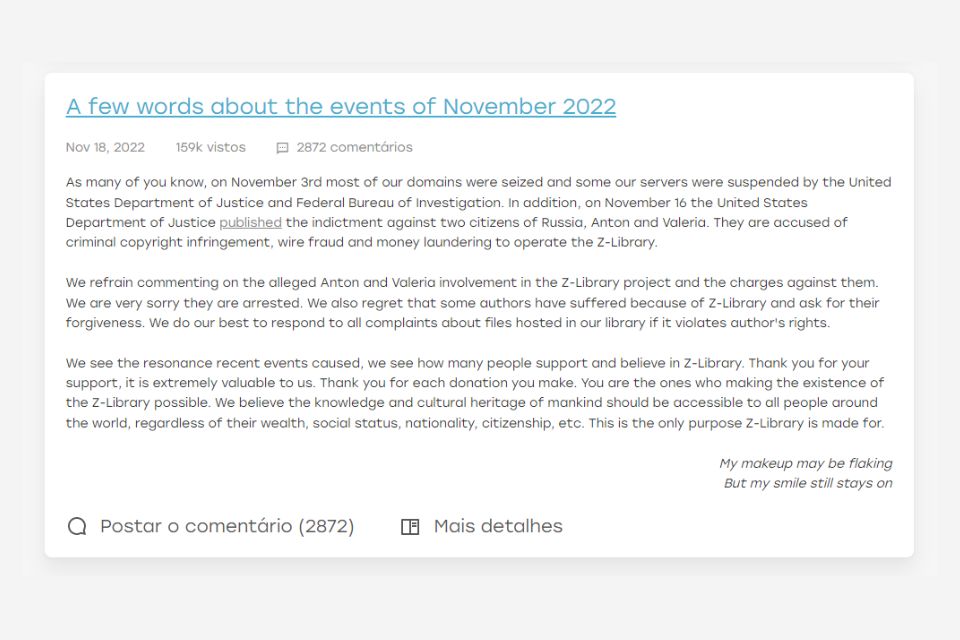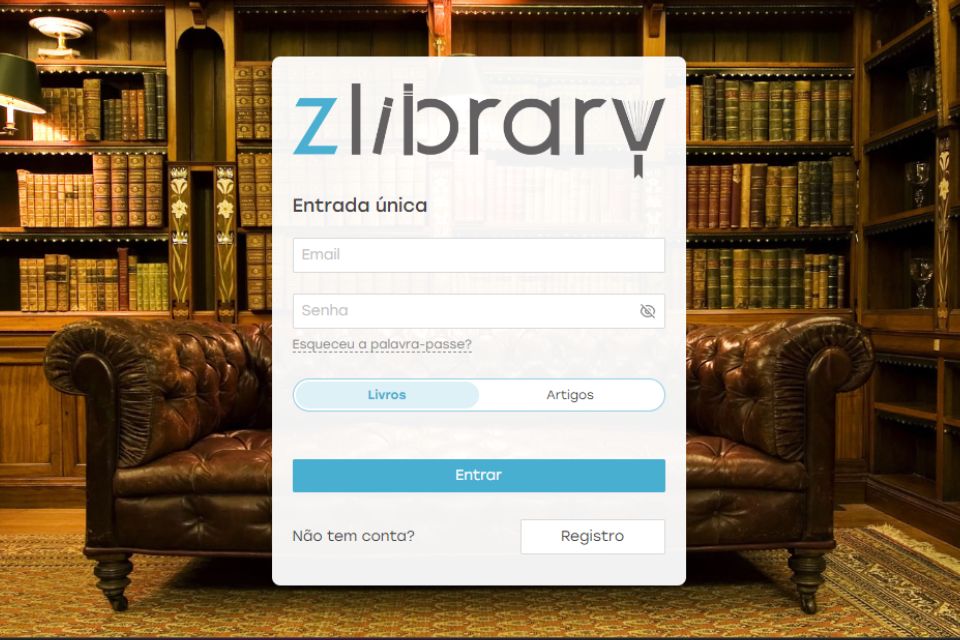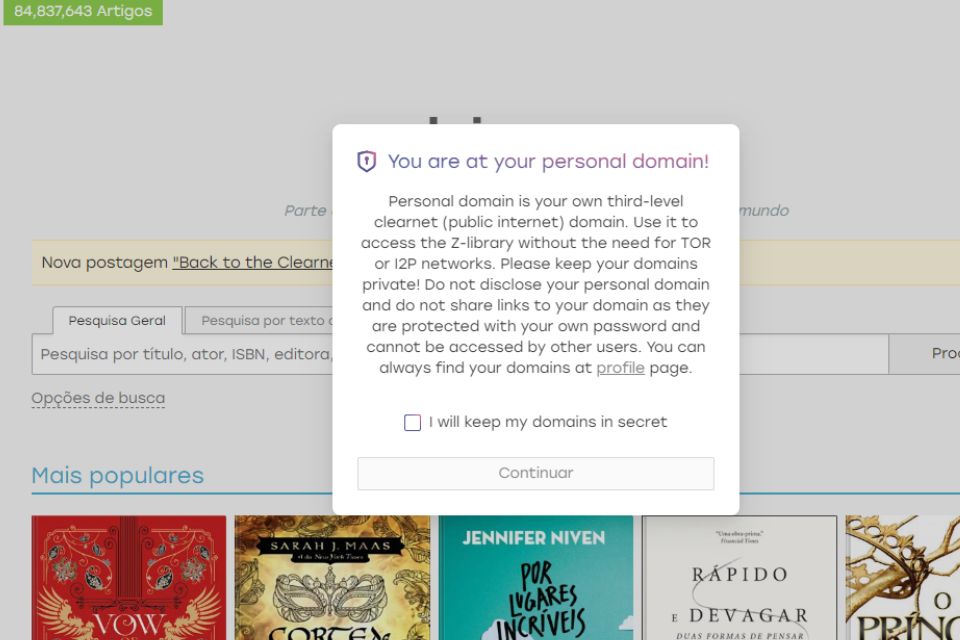OZ Library has emerged from the depths of the Deep Web and has a new look. After accusations of various piracy, copyright infringement and seizure of pages from the largest online library, Library Z was forced to provide a new method of access.
Check out the Z-Library ban discussion below and see how the site has managed to evade the US government’s anti-piracy actions!
What is the Z-Library and how did it work?
Z Library is a website that offers free access to over 10 million e-books, textbooks, course materials, and articles with public and private content.
Before being investigated by US authorities, Z Library worked like this: user had free download limit and he would pay a small fee to the site if he needed to download more files.
The free sharing of pirated versions without copyright protection in the Z Library is the reason for the struggle between the defenders of the site, claiming that they cannot pay for this content, and the authors whose entire works are uploaded to the Z Library without prizes. .
According to Wanderson Castilho, cybercrime expert and CEO of Enetsec, users should be aware of the dangers of this type of shadow libraryfunctions as an online database.
“Nowadays, with the era of information manipulation – shadow libraries – infringed copyright aside can bring modified content”says Castillo.
Despite this, the largest digital pirate library continued to gain popularity in the online world. On TikTok, the hashtag #zlibrary went viral with over 19 million views before being blocked by the social network.
Who knocked down the Z Library?
On November 3, 2022, the domain names of the OZ Library were confiscated. By the FBI and the United States Attorney for the Eastern District of New York. The suspension of the site is the result of an anti-piracy investigation that was initially not properly attributed to US authorities.
While some pages on the site did not load, the message “This domain name has been seized by the United States Postal Inspection Service by court order” was displayed on others.
Later, the Postal Inspection Service announced that the organization was not responsible for the removal of the Z Library.
At the time, there were also reports that users were receiving a message from the site from one of the providers hosting the Z Library, justifying the access problem as a server blocking.
With the announcement of the arrest of Russian Anton Napolsky and Valeriia Ermakova in Córdoba, Argentina, the arrest notice on the website has been updated with the correct logos of US organizations.
The Russians’ indictment includes copyright infringement, money laundering and electronic fraud. According to FBI deputy director Michael Driscoll, Napolsky and Ermakova worked on the hack site for more than a decade.
Two weeks after the events, Z Library made a statement on its blog. In the letter, the site apologizes to anyone who felt hurt by the files hosted in its repository, and thanks users for their donations and support for the platform to work.
 Blog Z-Library/Screenshot
Blog Z-Library/ScreenshotWho had access to the Z-Library on the Deep Web?
Z Library, which was removed from the internet surface by being indexed by search engines such as Google and Bing, started to work only on the Deep Web. This means that access is restricted by logins or paywalls to hide their content.
Soon, the backstage of the internet became the perfect place to keep the pirate site up and running, only accessed via emails and communities on Telegram.
The Z Library’s comeback came just 3 months later, when the government began adopting a new strategy to circumvent its blockades.
How is the Z Library website today?
 Z Library/Screenshot
Z Library/ScreenshotFebruary marked the return of Z Library to the visible internet. How was this possible? Reconfiguring the site as Pirate Bay did using the hydra technique.
Cyber expert Wanderson Castilho explains how this type of strategy manages to prevent its content from being removed by third parties.
“When a service provider or an authorized site or shadow library platform blocks or removes it, shadow library administrators quickly replicate their content across multiple servers and platforms, making it reusable via different URLs.”
In this way, registered users continue to access pirated content through unique domain names that should not be shared with other people, as per the notification shown when completing the registration.
The Z Library warning says “After logging into your account, you will be redirected to your personal domain. Please keep it private! Do not disclose it or share a link. It is protected by your password and cannot be accessed by other users”.

The technique, called hydra, derives from the similarity of approach to the Greek mythological monster whose heads grow back even after being cut off.
If the user encounters any access problems, the pirate site recommends that the login be done via TOR, which is open source software, or I2P, which is an isolated network from the clearnet.
According to the Torrent Freak website, it is not yet known how many domains are unique. But for now, records are working normally and bypassing open source intelligence tools (OSINT) It is used by digital forensics to gather evidence of piracy and identify criminals.
So, did you find out a little more about the return of the Z-Library website? If you want to know more details, keep an eye here and share with your friends on social media!
Source: Tec Mundo
I am a passionate and hardworking journalist with an eye for detail. I specialize in the field of news reporting, and have been writing for Gadget Onus, a renowned online news site, since 2019. As the author of their Hot News section, I’m proud to be at the forefront of today’s headlines and current affairs.











